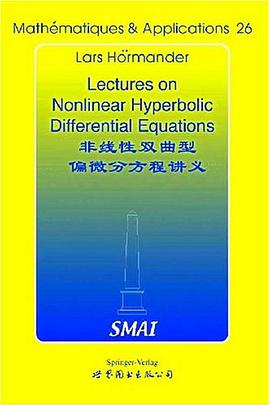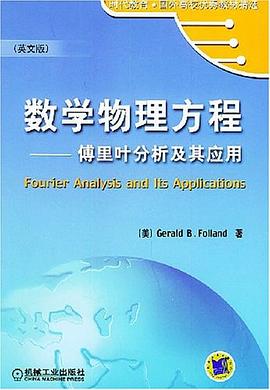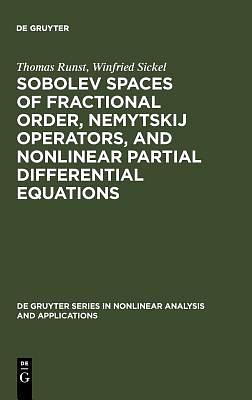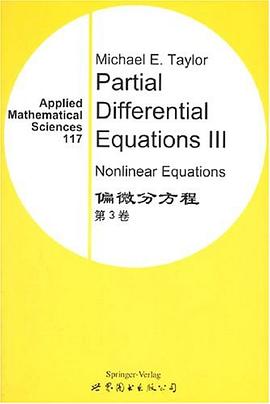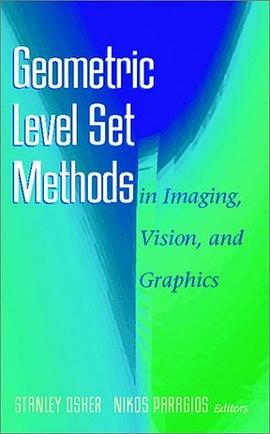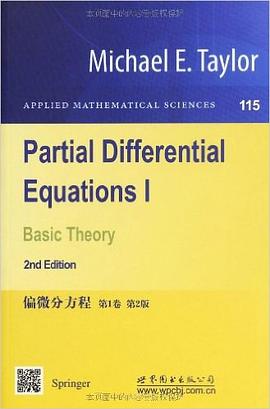
偏微分方程(第1卷)(原书第2版) pdf epub mobi txt 电子书 下载 2025
出版者:世界图书出版公司
作者:Michael E. Taylor
出品人:
页数:654
译者:
出版时间:2014-1-1
价格:99.00元
装帧:Paperback
isbn号码:9787510068133
丛书系列:
图书标签:
- 偏微分方程
- 物理的应用
- 数学
- 偏微分方程7
- PDE
- #MathsPh
- #Logic&Maths
- 偏微分方程
- 数学
- 应用数学
- 微分方程
- 高等数学
- 物理数学
- 数学分析
- 科学计算
- 数学理论
- 工程数学
下载链接在页面底部

具体描述
作者简介
目录信息
Contents of Volumes Ⅱ and Ⅲ
Preface
1 Basic Theory of ODE and Vector Fields
1 The derivative
2 Fundamental local existence theorem for ODE
3 Inverse function and implicit function theorems
4 Constant—coefficientlinear systems; exponentiation of matrices
5 Variable—coefficientlinear systems of ODE: Duhamels principle
6 Dependence of solutions on initial data and on other parameters
7 Flows and vector fields
8 Lie brackets
9 Commuting flows; Frobeniuss theorem
10 Hamiltoniansystems
11 Geodesics
12 Variational problems and the stationary action principle
13 Differential forms N
14 The symplectic form and canonical transformations
15 First—order scalar nonlinear PDE
16 Completely integrable hamiltonian systems
17 Examples of integrable systems; central force problems
18 Relativistic motion
19 Topological applications of differential forms
20 Critical points and index of a vector field
A Nonsmooth vector fields
References
2 The Laplace Equation and Wave Equation
1 Vibrating strings and membranes
2 The divergence of a vector field
3The covariant derivative and divergence of tensor fields
4 The Laplace operator on a Riemannian manifold
5 The wave equation on a product manifold and energy conservation
6 Uniqueness and finite propagation speed
7 Lorentz manifolds and stress—energy tensors
8 More general hyperbolic equations; energy estimates
9 The symbol of a differential operator and a general Green—Stokes formula
10 The Hodge Laplacian on k—forms
11 Maxwells equations
References
3 FourierAnalysisDistributions and Constant—Coefficient Linear PDE
1 Fourier series
2 Harmonic functions and holomorphic functions in the plane
3 The Fourier transform
4 Distributions and tempered distributions
5 The classical evolution equations
6 Radial distributions polar coordinates and Bessel functions
7 The method ofimages and Poissons summation formula
8 Homogeneous distributions and principal value distributions
9 Elliptic operators
10 Local solvability ofconstant—coefficientPDE
11 The discrete Fourier transform
12 The fast Fourier transform
A The mighty Gaussian and the sublime gamma function
References
4 SobolevSpaces
1 Sobolev spaces on Rn
2 The complex interpolation method
3 Sobolev spaces on compact manifolds
4 Sobolev spaces on bounded domains
5 The Sobolev spaces H50(Ω)
6 The Schwartzkerneltheorem
7 Sobolev spaces on rough domains
References
5 Linear Elliptic Equations
1 Existence and regularity of solutions to the Dirichlet problem
2 The weak and strong maximum principles
3 The Dirichlet problem on the ba
4 The Riemann mapping theorem (smooth boundary)
5 The Dirichlet problem on a domain with a rough boundary
6 The Riemann mapping theorem (rough boundary)
7 The Neumann boundary problem
8 The Hodge decomposition and harmonic forms
9 Natural boundary problems for the Hodge Laplacian
10 Isothermal coordinates and conformal structures on surfaces
11 General elliptic boundary problems
12 Operator properties ofregular boundary problems
A Spaces of generalized functions on manifolds with boundary
B The Mayer—Vietoris sequ6nce in deRham cohomology
References
6 Linear Evolution Equations
1 The heat equation and the wave equation on bounded domains
2 The heat equation and wave equation on unbounded domains
3 Maxwell's equations
4 TheCauchy—Kowalewsky theorem
5 Hyperbolic systems
6 Geometrical optics
7 The formation of caustics
8 Boundary layer phenomena for the heat semigroup
A Some Banach spaces of harmonic functions
B The stationary phase method
References
A Outline of Functional Analysis
1 Banach spaces
2 Hilbert spaces
3 Fr6chet spaces; locally convex spaces
4 Duality
5 Linear operators
6 Compact operators
7 Fredholm operators
8 Unbounded operators
9 Semigroups
References
B Manifolds, Vector Bundles, and Lie Groups
1 Metric spaces and topological spaces
2 Manifolds
3 Vector bundles
4 Sard's theorem
5 Lie groups
6 The Campbell—Hausdorffformula
7 Representations of Lie groups and Lie algebras
8 Representations of compact Lie groups
9 Representations of SU(2) and related groups
References
Index
· · · · · · (收起)
Preface
1 Basic Theory of ODE and Vector Fields
1 The derivative
2 Fundamental local existence theorem for ODE
3 Inverse function and implicit function theorems
4 Constant—coefficientlinear systems; exponentiation of matrices
5 Variable—coefficientlinear systems of ODE: Duhamels principle
6 Dependence of solutions on initial data and on other parameters
7 Flows and vector fields
8 Lie brackets
9 Commuting flows; Frobeniuss theorem
10 Hamiltoniansystems
11 Geodesics
12 Variational problems and the stationary action principle
13 Differential forms N
14 The symplectic form and canonical transformations
15 First—order scalar nonlinear PDE
16 Completely integrable hamiltonian systems
17 Examples of integrable systems; central force problems
18 Relativistic motion
19 Topological applications of differential forms
20 Critical points and index of a vector field
A Nonsmooth vector fields
References
2 The Laplace Equation and Wave Equation
1 Vibrating strings and membranes
2 The divergence of a vector field
3The covariant derivative and divergence of tensor fields
4 The Laplace operator on a Riemannian manifold
5 The wave equation on a product manifold and energy conservation
6 Uniqueness and finite propagation speed
7 Lorentz manifolds and stress—energy tensors
8 More general hyperbolic equations; energy estimates
9 The symbol of a differential operator and a general Green—Stokes formula
10 The Hodge Laplacian on k—forms
11 Maxwells equations
References
3 FourierAnalysisDistributions and Constant—Coefficient Linear PDE
1 Fourier series
2 Harmonic functions and holomorphic functions in the plane
3 The Fourier transform
4 Distributions and tempered distributions
5 The classical evolution equations
6 Radial distributions polar coordinates and Bessel functions
7 The method ofimages and Poissons summation formula
8 Homogeneous distributions and principal value distributions
9 Elliptic operators
10 Local solvability ofconstant—coefficientPDE
11 The discrete Fourier transform
12 The fast Fourier transform
A The mighty Gaussian and the sublime gamma function
References
4 SobolevSpaces
1 Sobolev spaces on Rn
2 The complex interpolation method
3 Sobolev spaces on compact manifolds
4 Sobolev spaces on bounded domains
5 The Sobolev spaces H50(Ω)
6 The Schwartzkerneltheorem
7 Sobolev spaces on rough domains
References
5 Linear Elliptic Equations
1 Existence and regularity of solutions to the Dirichlet problem
2 The weak and strong maximum principles
3 The Dirichlet problem on the ba
4 The Riemann mapping theorem (smooth boundary)
5 The Dirichlet problem on a domain with a rough boundary
6 The Riemann mapping theorem (rough boundary)
7 The Neumann boundary problem
8 The Hodge decomposition and harmonic forms
9 Natural boundary problems for the Hodge Laplacian
10 Isothermal coordinates and conformal structures on surfaces
11 General elliptic boundary problems
12 Operator properties ofregular boundary problems
A Spaces of generalized functions on manifolds with boundary
B The Mayer—Vietoris sequ6nce in deRham cohomology
References
6 Linear Evolution Equations
1 The heat equation and the wave equation on bounded domains
2 The heat equation and wave equation on unbounded domains
3 Maxwell's equations
4 TheCauchy—Kowalewsky theorem
5 Hyperbolic systems
6 Geometrical optics
7 The formation of caustics
8 Boundary layer phenomena for the heat semigroup
A Some Banach spaces of harmonic functions
B The stationary phase method
References
A Outline of Functional Analysis
1 Banach spaces
2 Hilbert spaces
3 Fr6chet spaces; locally convex spaces
4 Duality
5 Linear operators
6 Compact operators
7 Fredholm operators
8 Unbounded operators
9 Semigroups
References
B Manifolds, Vector Bundles, and Lie Groups
1 Metric spaces and topological spaces
2 Manifolds
3 Vector bundles
4 Sard's theorem
5 Lie groups
6 The Campbell—Hausdorffformula
7 Representations of Lie groups and Lie algebras
8 Representations of compact Lie groups
9 Representations of SU(2) and related groups
References
Index
· · · · · · (收起)
读后感
评分
评分
评分
评分
评分
用户评价
评分
实体书于2014入手1 此书电子版下载:http://emuch.net/bbs/viewthread.php?tid=9030900 不要用作非法用途,仅仅作为学习用途!
评分实体书于2014入手1 此书电子版下载:http://emuch.net/bbs/viewthread.php?tid=9030900 不要用作非法用途,仅仅作为学习用途!
评分实体书于2014入手1 此书电子版下载:http://emuch.net/bbs/viewthread.php?tid=9030900 不要用作非法用途,仅仅作为学习用途!
评分实体书于2014入手1 此书电子版下载:http://emuch.net/bbs/viewthread.php?tid=9030900 不要用作非法用途,仅仅作为学习用途!
评分实体书于2014入手1 此书电子版下载:http://emuch.net/bbs/viewthread.php?tid=9030900 不要用作非法用途,仅仅作为学习用途!
相关图书
本站所有内容均为互联网搜索引擎提供的公开搜索信息,本站不存储任何数据与内容,任何内容与数据均与本站无关,如有需要请联系相关搜索引擎包括但不限于百度,google,bing,sogou 等
© 2025 book.quotespace.org All Rights Reserved. 小美书屋 版权所有





